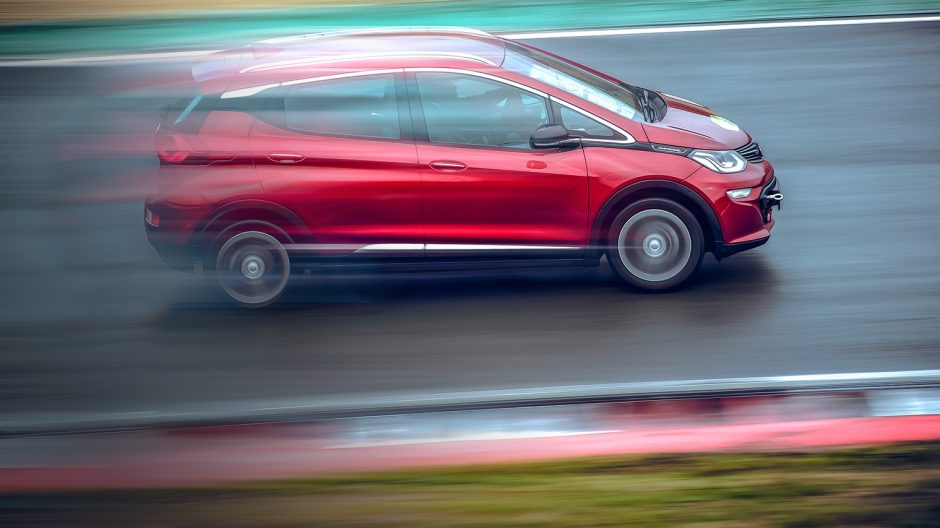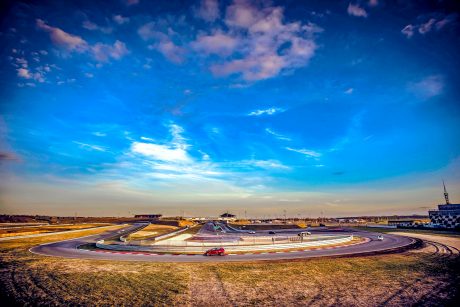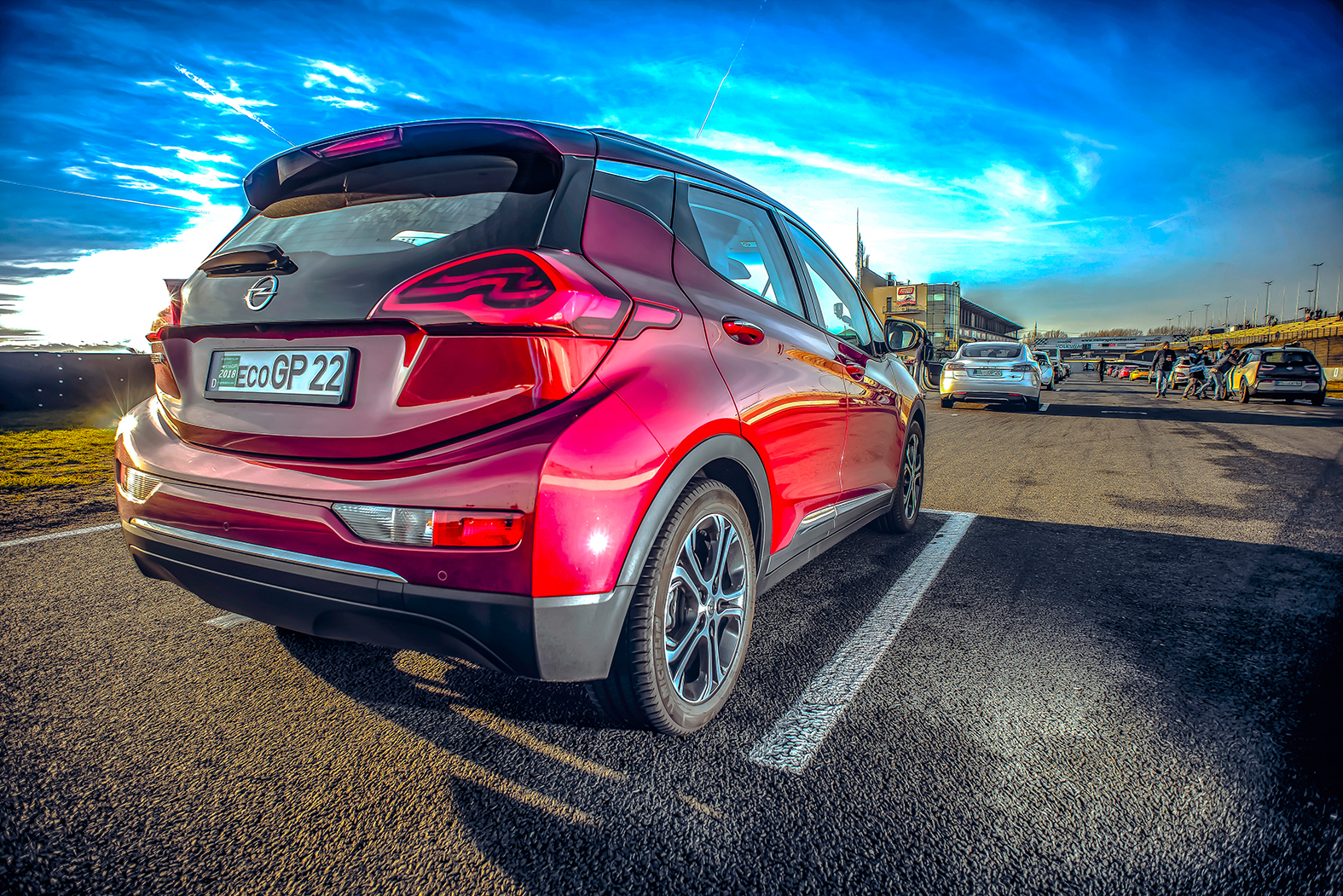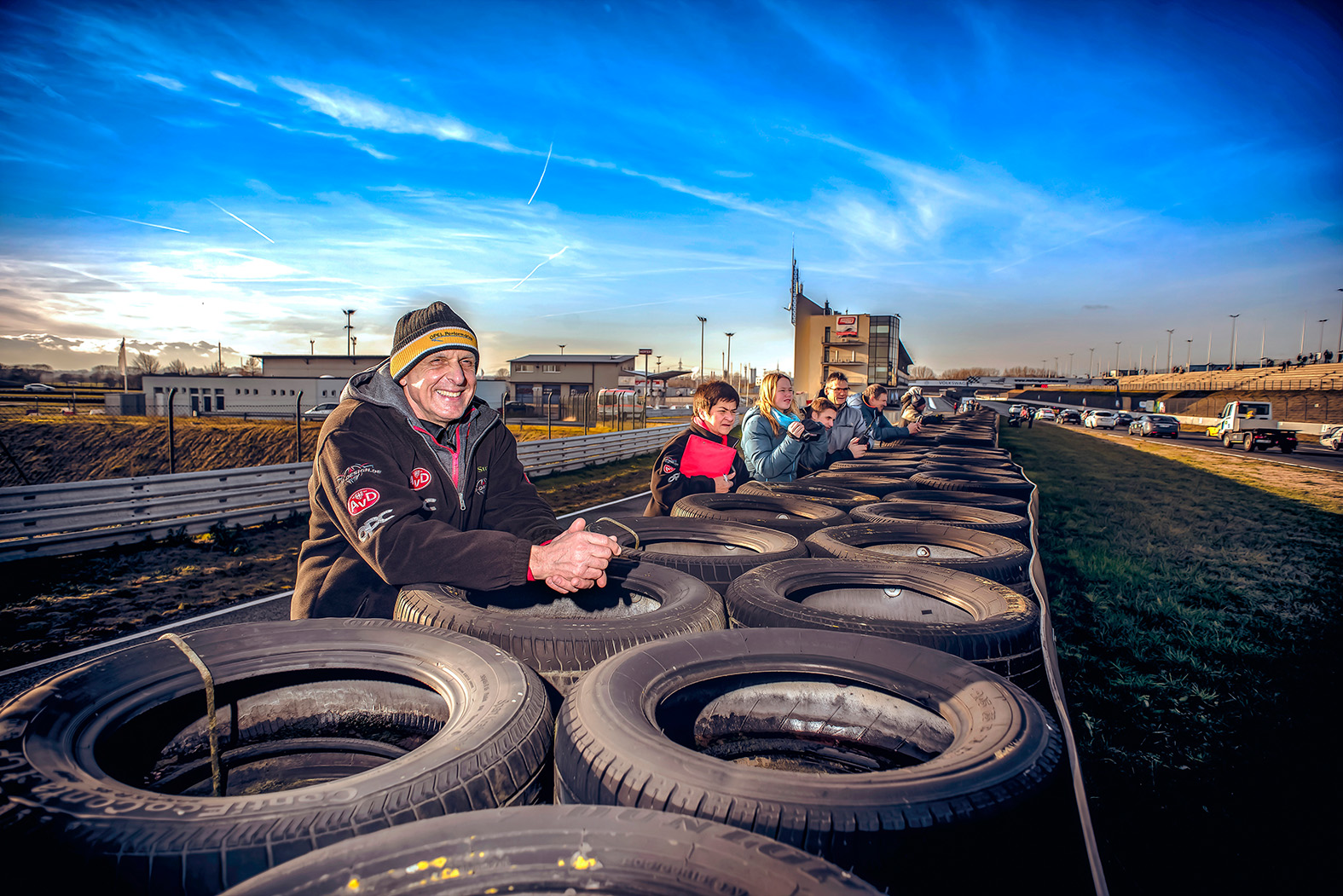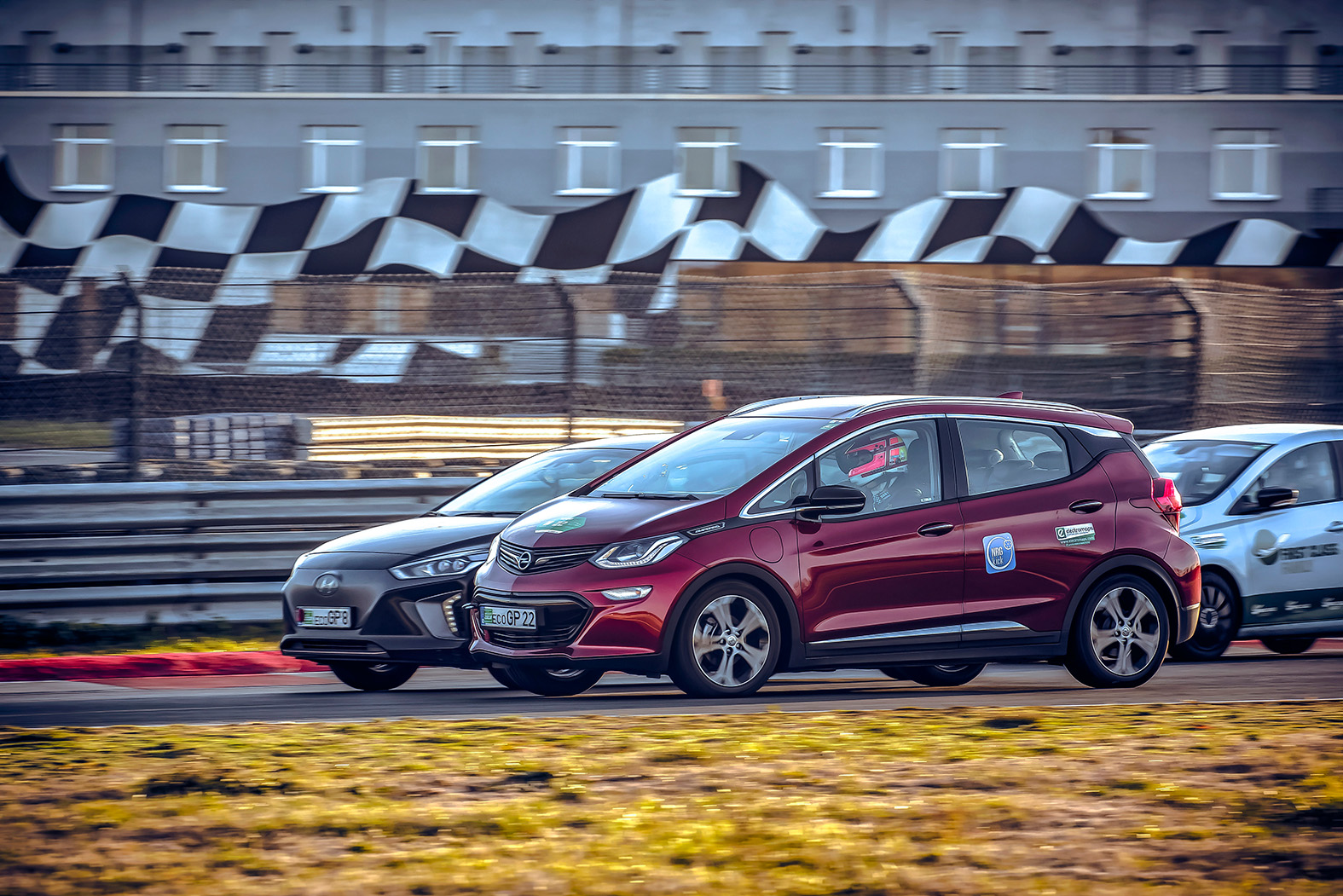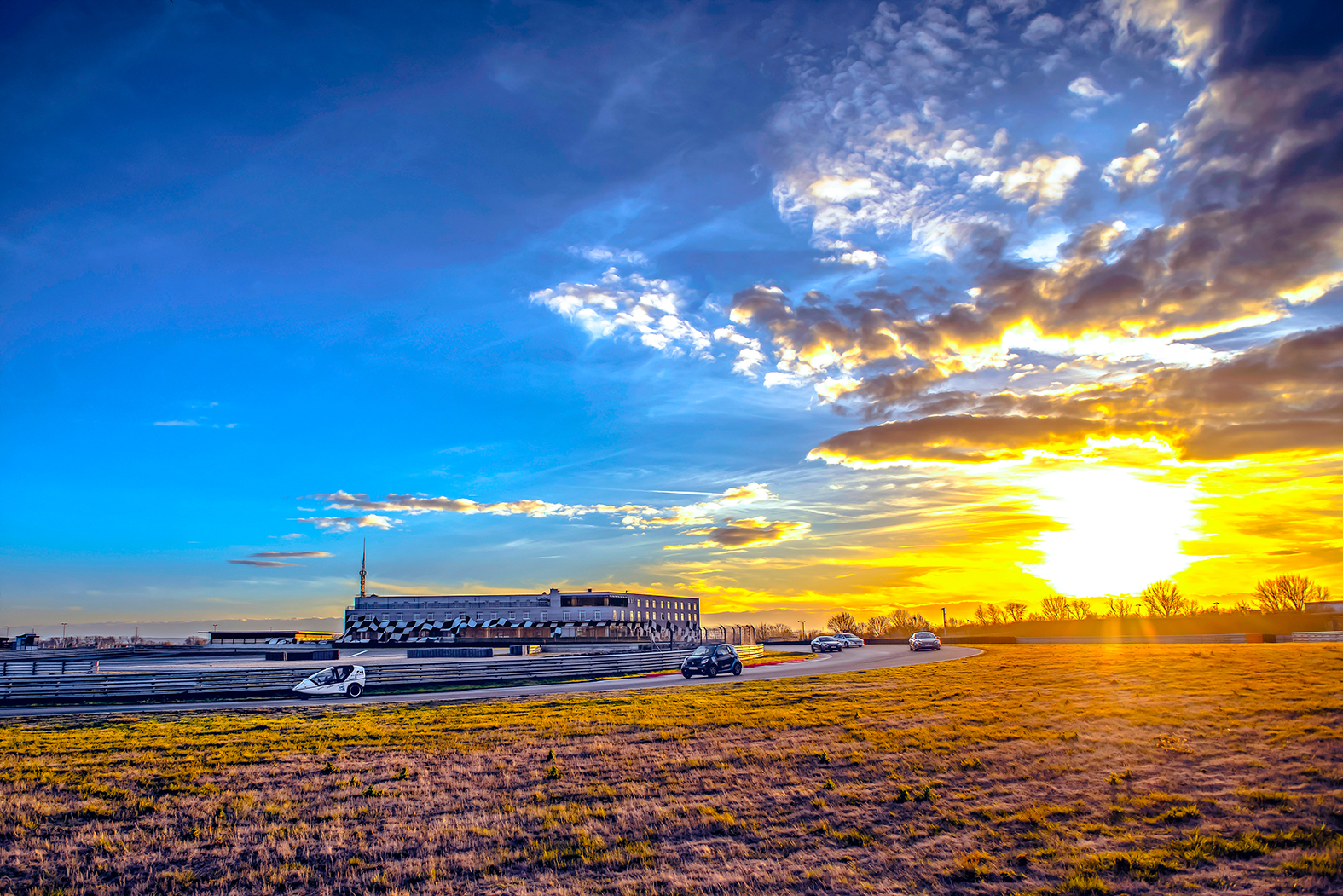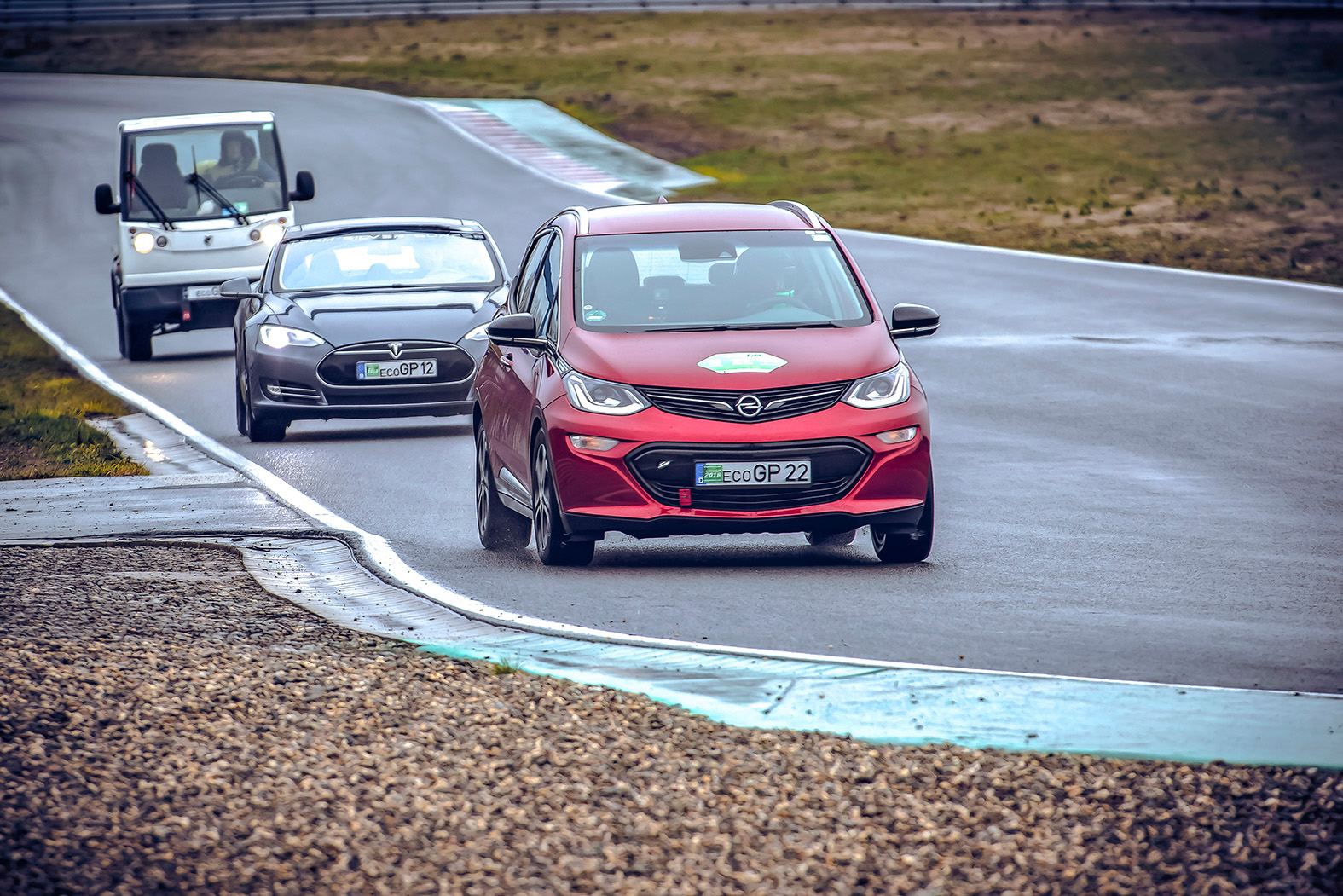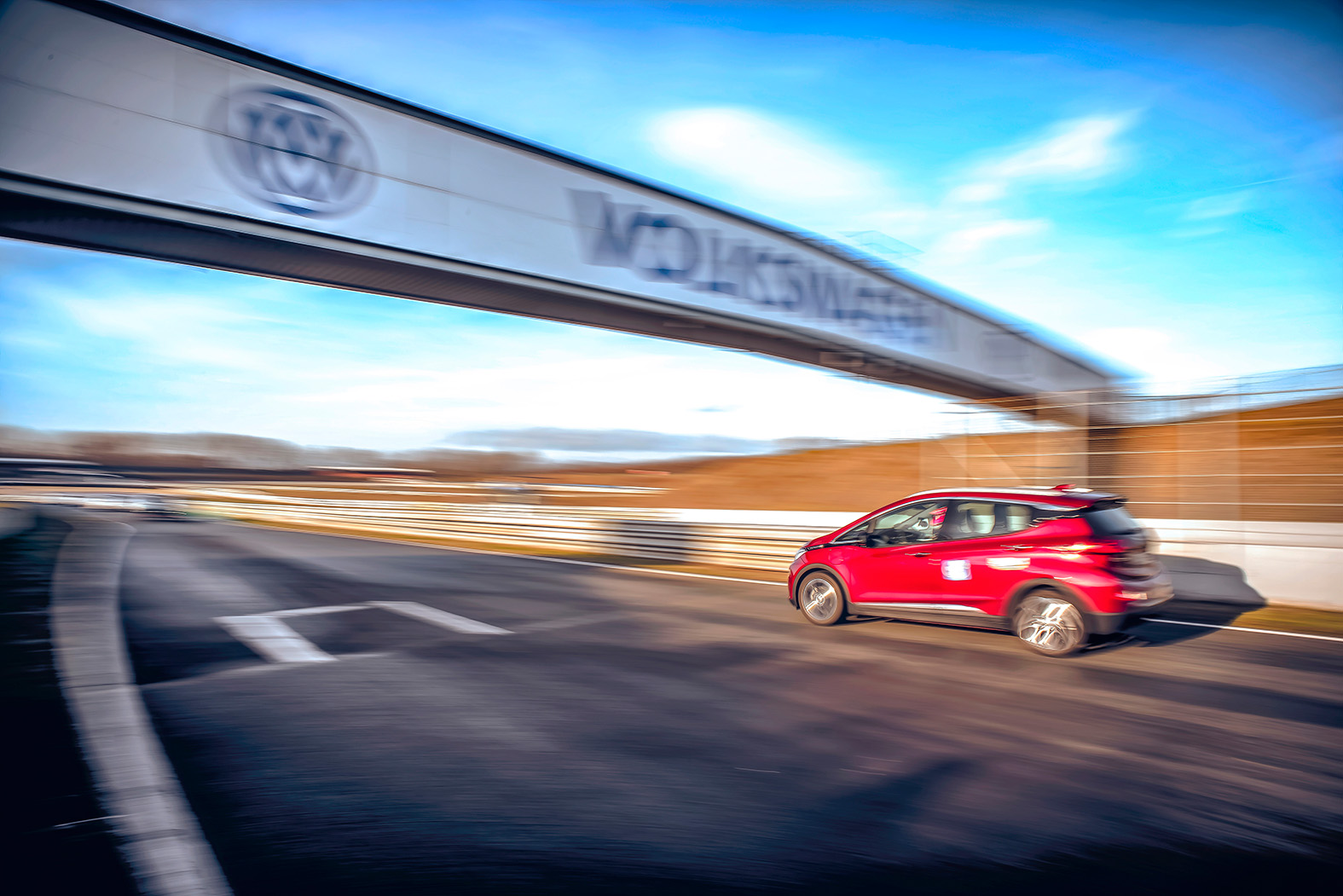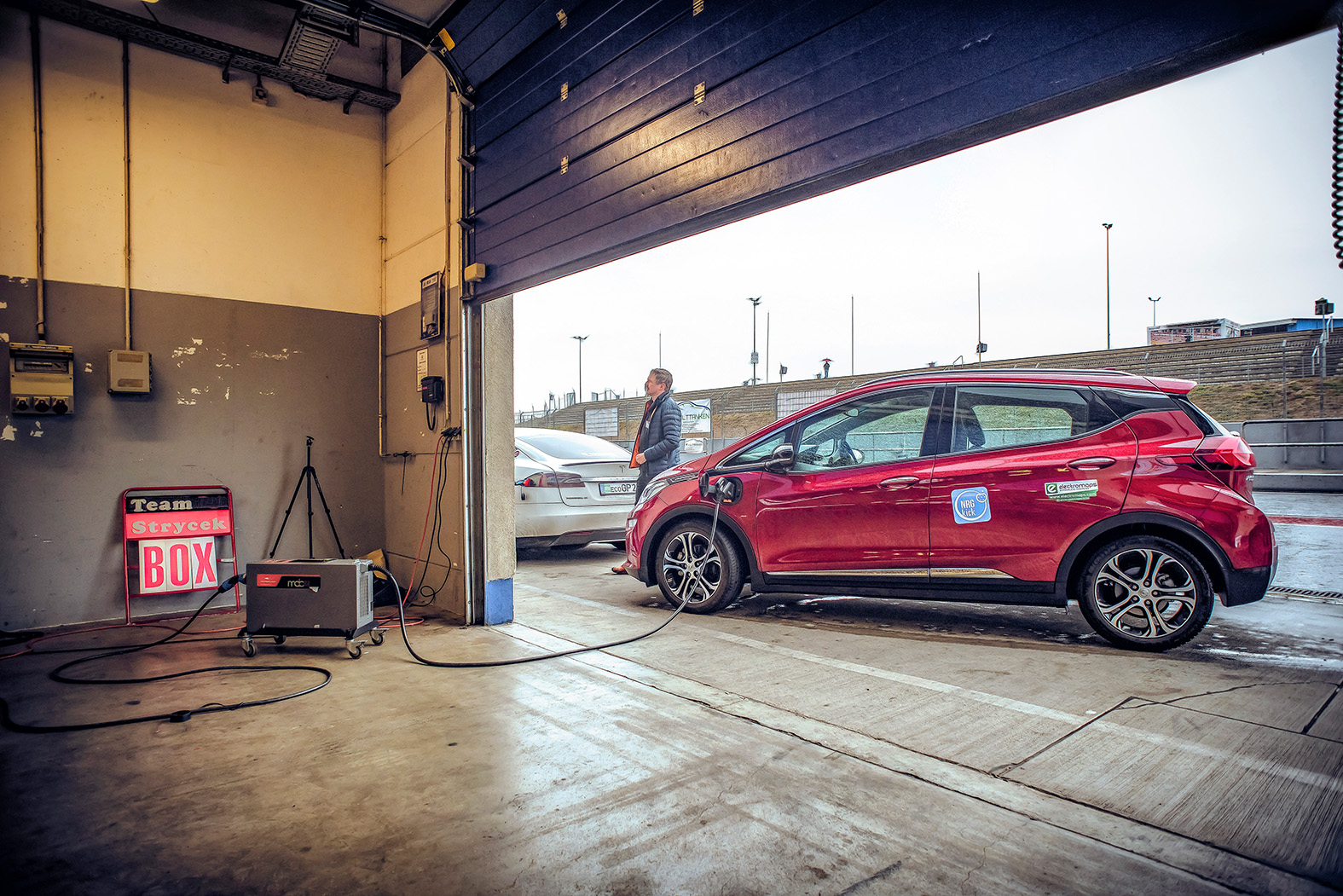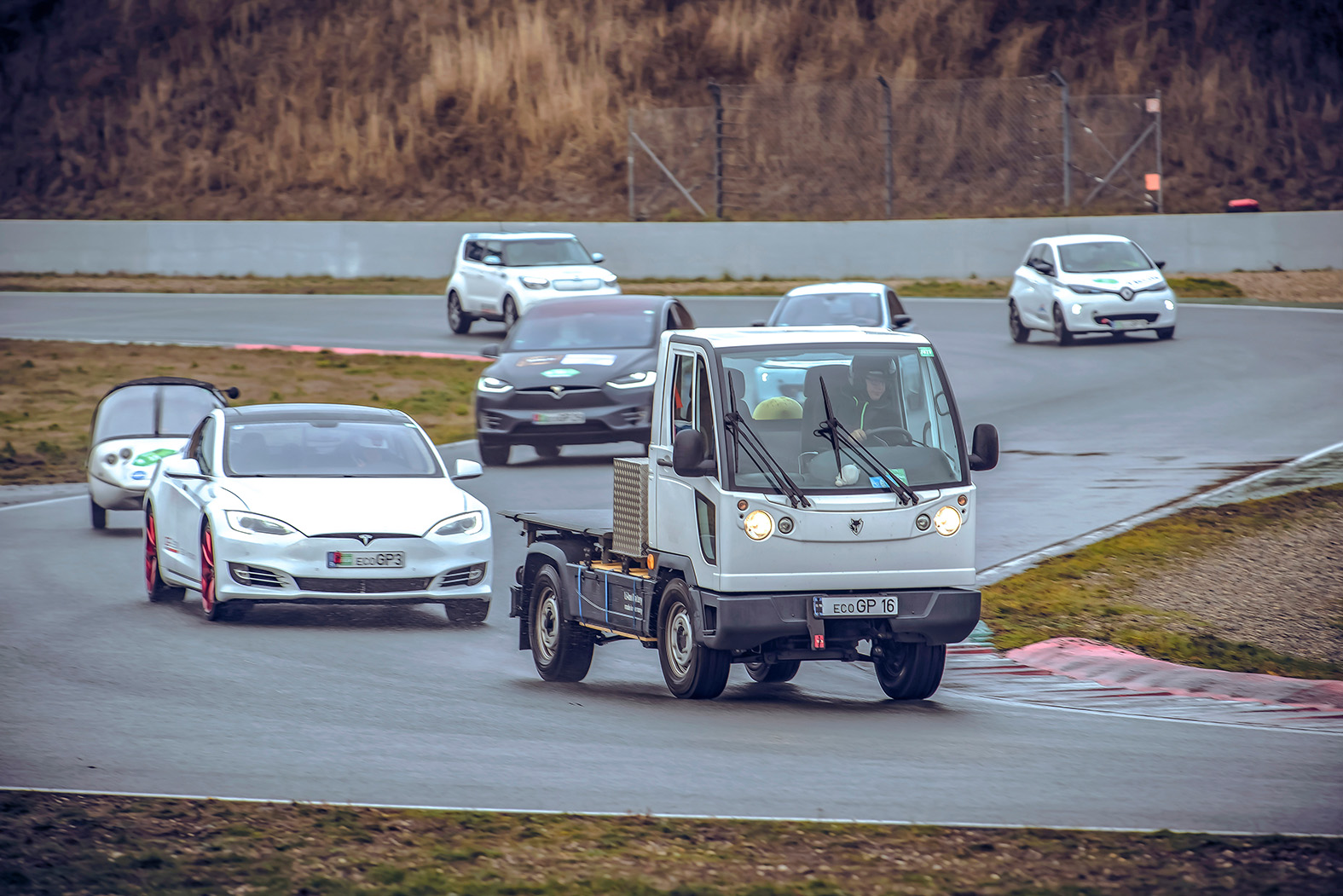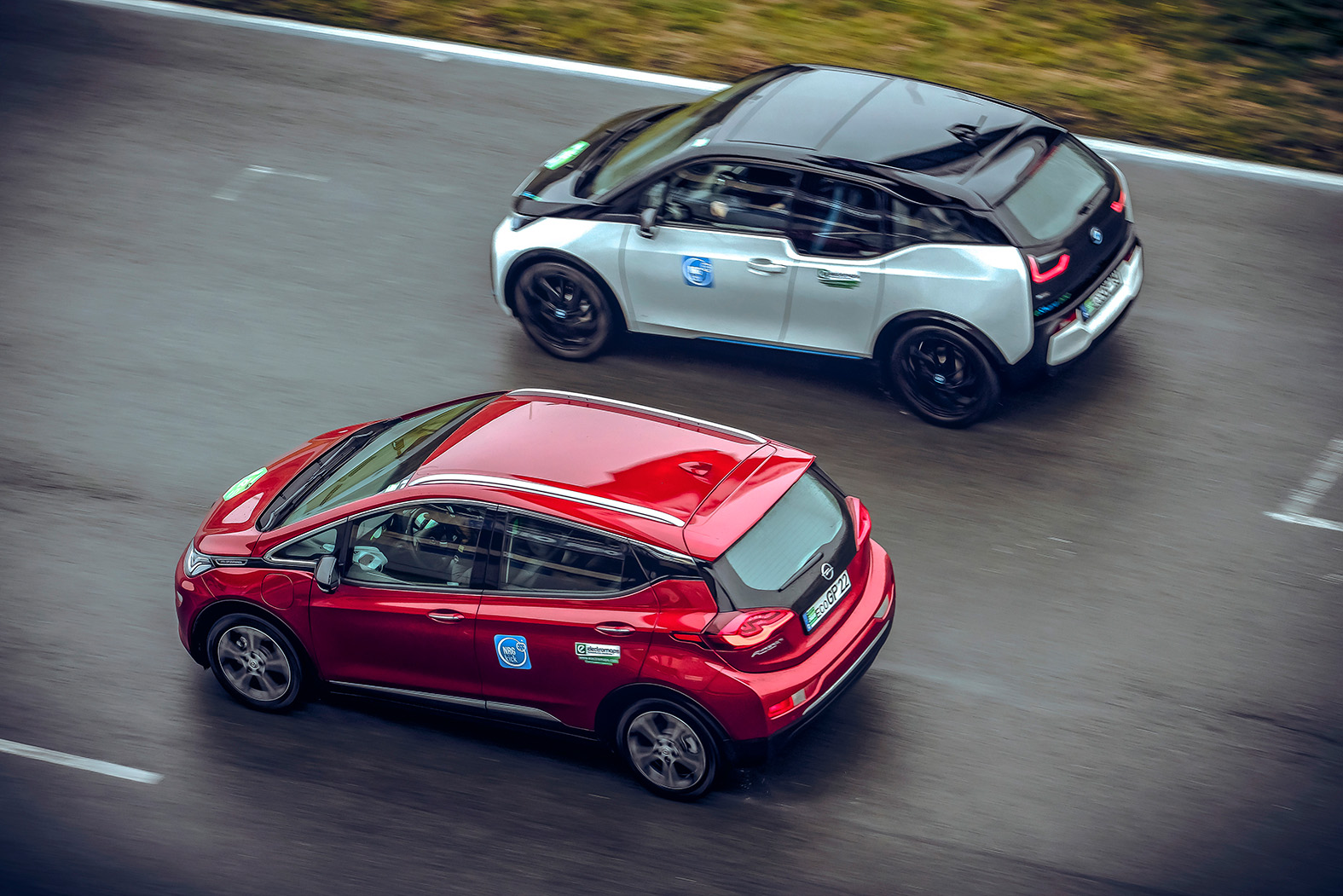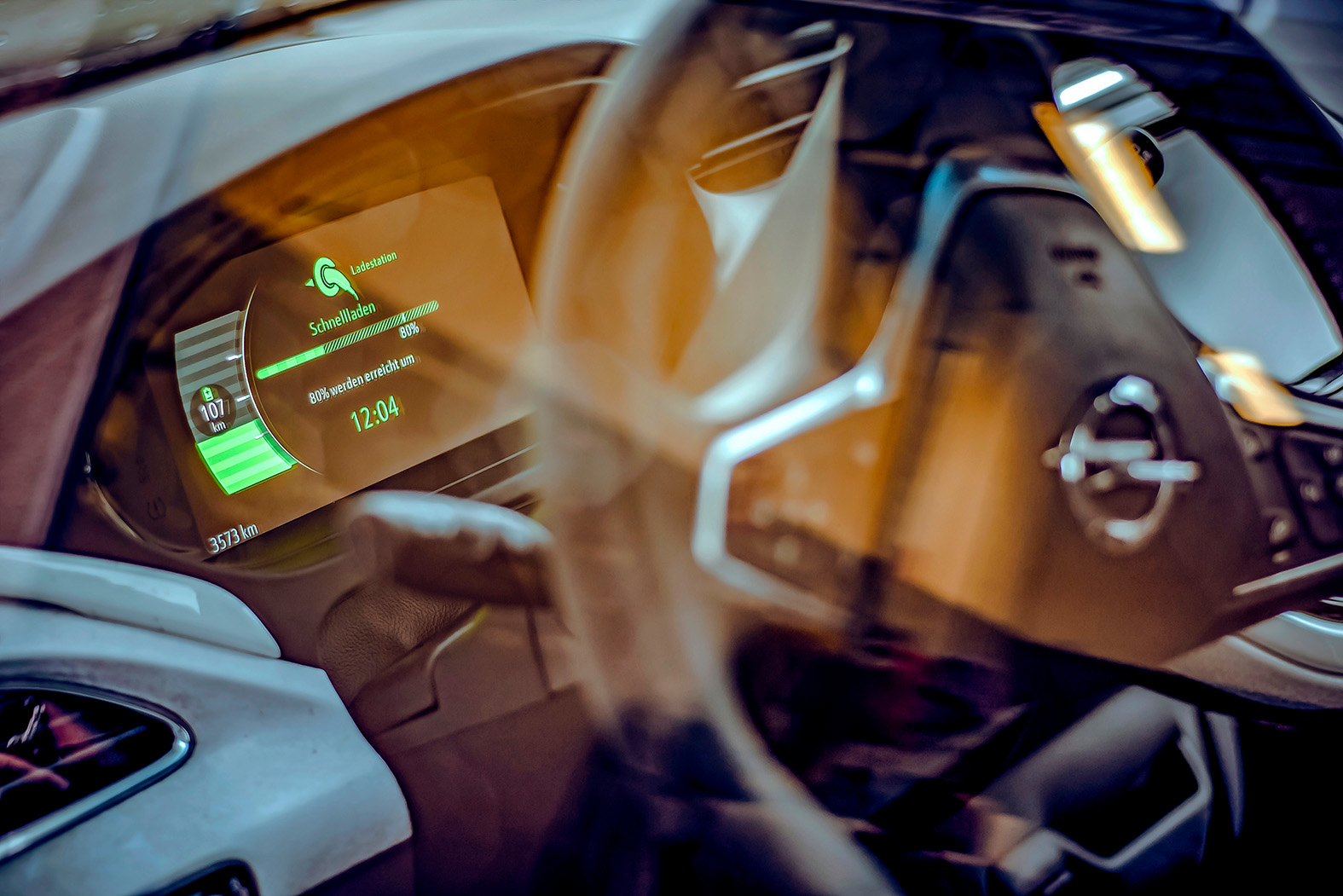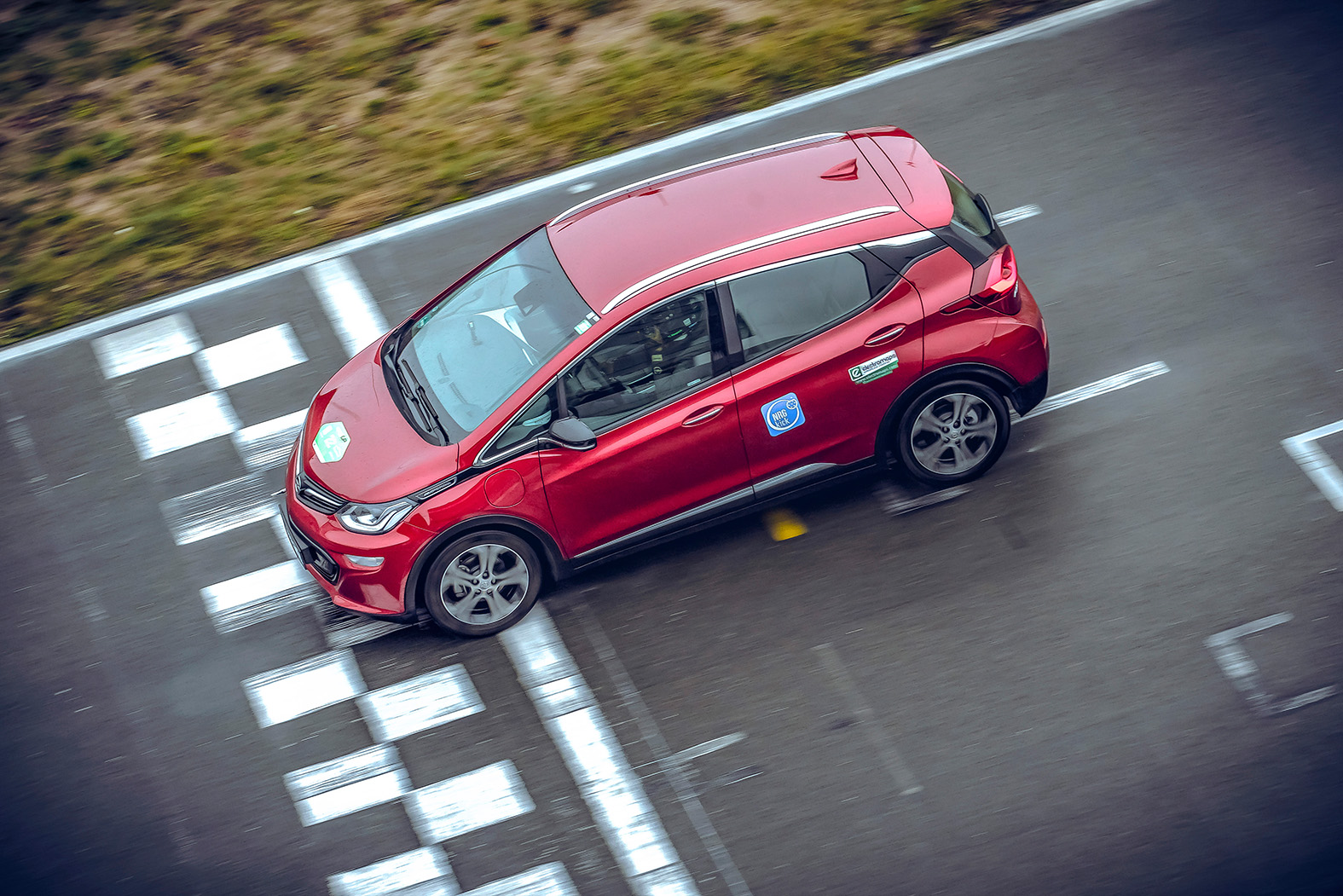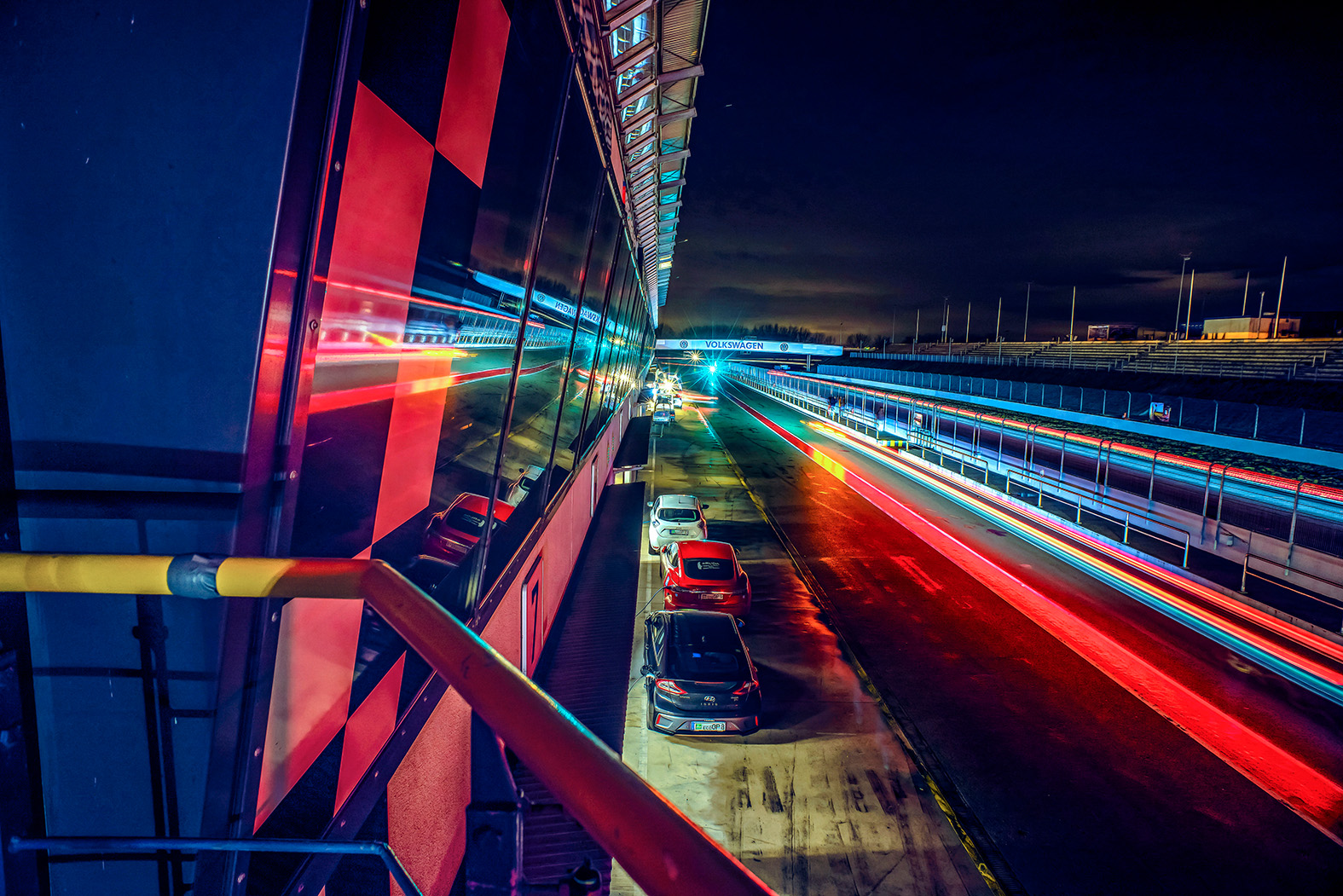–––––
A special world premiere was held in Saxony-Anhalt: the first 24-hour race for electric cars.
–––––
He raced on many tracks across the world and won the Deutsche Tourenwagen Championship in the 1980s, before setting a record lap time in a Calibra and Astra at the Nürburgring and going on to win the prestigious 24-hour race in a DTM Opel Astra V8 at the same track. But what is he up to these days? We found Volker Strycek raring to go at the motorsports arena in Oschersleben, waiting in the wings at another 24-hour race at the beginning of December. But this wasn’t just any old race.
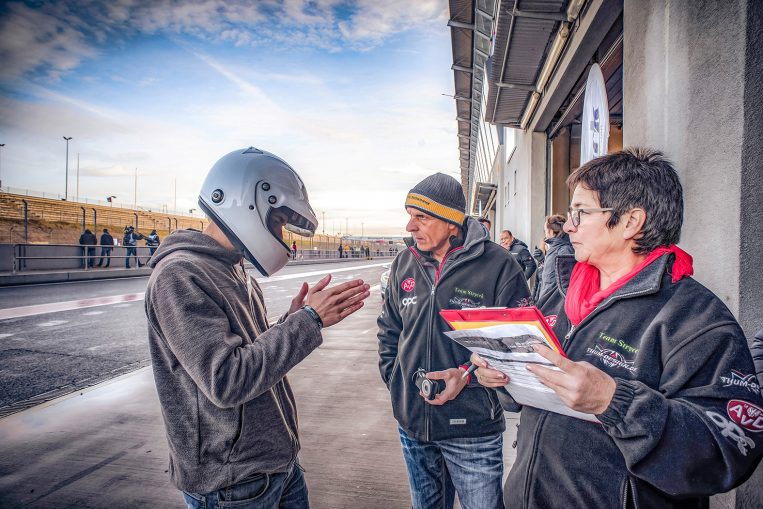
Energy saving mode: Stefan Fiedler and Volker and Maggy Strycek (from left) discuss the most effective style of driving to cover as many laps as possible.
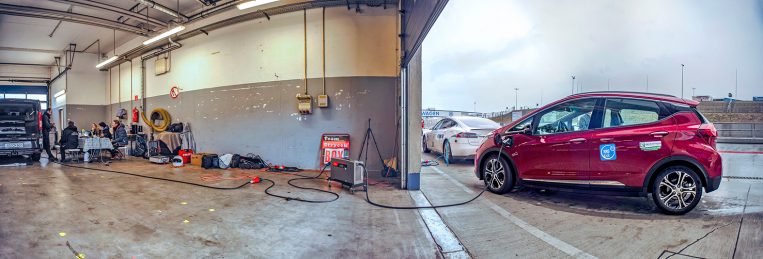
Preparations: The Ampera-e charges by means of a DC charger in a conventional 32 A three-phase current socket.
–––––
30 electric vehicles were set the challenge of driving as many laps as possible. The Tesla Model S, the Renault ZOE, and a BMW i3s were among the cars at the starting line.
–––––
That’s because even at the age of 61 and after a successful motorsports career, the racer is still up for tackling new challenges. One such challenge came in the form of the first Eco Grand Prix, a very special world premiere held in the Börde region of Saxony-Anhalt during the first weekend of December. Forget about the roar of engines and the smell of gasoline – 30 exclusively electric vehicles, including the Tesla Model S, the Renault ZOE, and a BMW i3s commanded by the first and only female Dakar Rally winner, Jutta Kleinschmidt, went head-to-head on the racing track.
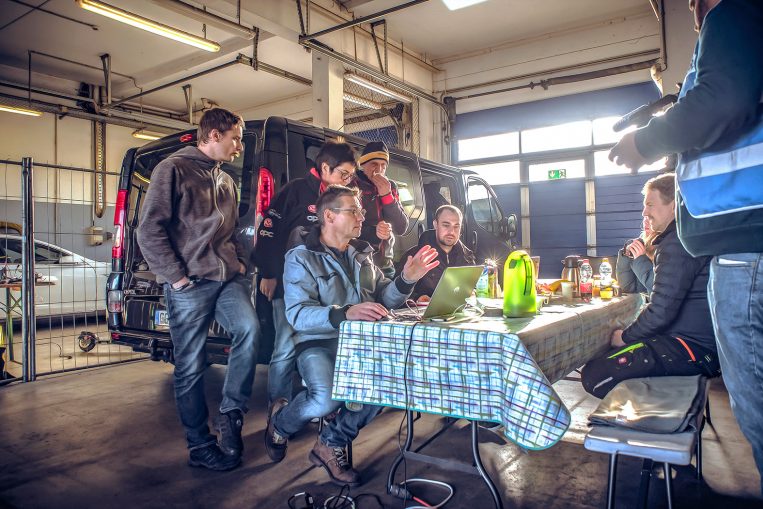
The team assembles in the garage: Dr. Peter Ramminger explains the driving and charging strategy.
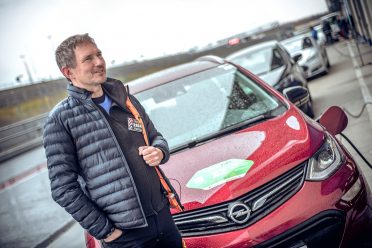
The initiator: Dr. Matthias Alt stands by the Ampera-e while it recharges its energy reserves.
Volker Strycek, head of the Opel Performance Center, is a member of the Opel Team that took part in the 24-hour endurance race for electric cars – in an Opel Ampera-e, of course. The team was put together very recently, while most other competitors had been preparing intensively for this day for several months, not to mention the fact that the rest of the team members combined had a mere fraction of the racing experience that Volker Strycek could bring to the table. For example, for his colleague Dr. Matthias Alt, Chief Engineer for Engine Development in Rüsselsheim, Germany, it was the first time he had ever actually been on a racetrack. But, like the rest of his teammates, he managed to balance out this lack of experience with tons of enthusiasm, a fantastic sense of team spirit, and a great deal of technical expertise.
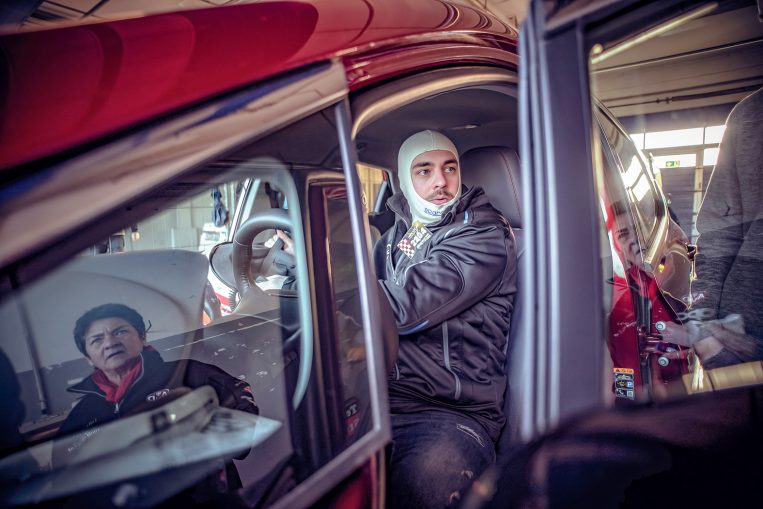
Like Volker, like son: Robin Strycek prepares for his turn behind the wheel.
Dr. Peter Ramminger, Opel Chief Engineer for Electrical Drive Systems, was also able to offer the same attributes. However, as team strategist he didn’t do a shift behind the steering wheel, but instead sat in the pit in front of two computer screens on which he constantly calculated the consumption values required for each lap, and forwarded these to the drivers.
These values were the most important key to the team’s success. After all, this race wasn’t just about completing laps of the 2.3 kilometer course within the shortest time possible – it was also about doing so with the lowest possible consumption.
The team that covered the most laps in 24 hours would win. While the winning team would need to be quick drivers, they would need to keep charging stops to a minimum first and foremost. This is because driving fast discharges the battery faster, and charging takes a considerable amount of time, particularly because of the regulated limited charging capacity of 22 kW. We’ve seen it before: The winner heads to the pit, only to return to the track in the last place. Conventional 32 A three-phase current sockets were used for charging. The fact that charging the final 20 percent of a battery takes half the time it takes to charge it to 80 percent also had to be factored in – which was why they chose not to charge beyond this level.
Eco Grand Prix
Photo gallery: How the Opel Ampera-e fared in the e-race in Oschersleben
- Zum Einsatz kam ein serienmäßiger Opel Ampera-e, Modelljahr ‘19.
- Matthias Alt, Robin Strycek und Stefan Fiedler wechselten sich als Piloten ab. Volker Strycek (Foto) übernahm in den schwierigsten Rennphasen das Steuer: mitten in der Nacht und zum Endspurt.
- Die erste Fahrphase war die längste, da der Opel-Stromer mit einem Ladezustand von 100 Prozent an den Start ging.
- Nach dem ersten Fahrerwechsel dauerten die Fahrphasen jeweils etwa 3 Stunden und 10 Minuten, gefolgt von etwa 2 Stunden und 10 Minuten Ladezeit.
- „Die Zielwerte zu der mittleren Fahrgeschwindigkeit haben wir aus den Erfahrungswerten mit der Nutzung des Ampera-e abgeleitet“, erläutert Chefstratege Peter Ramminger.
- Unklar war, wieviel zusätzliche Energie für die Verzögerungs- und Beschleunigungsvorgänge vor und nach Kurven auf dem Kurs in Oschersleben benötigt würden. Bei drei Proberunden vor dem Start konnte das Team Erkenntnisse dazu sammeln.
- Während eines Ladevorgangs überhitzten die Leitungsschutzschalter der Drehstromversorgung. Zum Glück aber hatte das Team eine starke Industrie-Verlängerung für Drehstromkabel dabei, sodass nur wenige Sekunden verloren gingen.
- Knapp 3 Stunden nachdem es zu regnen begonnen hatte, gab es eine Pace Car-Phase, da eines der dreirädrigen „Twikes“ in einer Kurve von der Fahrbahn abgekommen war. Ladevorgänge in der Box mussten während dieser Zeit unterbrochen werden.
- Der letzte Ladestopp des Ampera-e wurde in Anbetracht des definierten Renn-Endes verkürzt. Ramminger: „Wegen des starken Regens hatten wir einen weiteren Zuschlag für die Energiereserve einkalkuliert.“
- „Da in der Schlussphase alle teilnehmenden Fahrzeuge auf der Strecke waren, konnten wir diese Energie nicht mehr durchgehend in Geschwindigkeit übersetzen“, erläutert der Stratege.
- Das kurzfristig formierte Opel-Team beendete den Eco Grand Prix als Vierter. „Wir sind mehr als zufrieden – von einem vierten Platz hätte ich niemals zu träumen gewagt“, sagt Dr. Matthias Alt.
- „Und natürlich wissen wir schon, was wir im Wiederholungsfall verbessern könnten“, so Ramminger.
However, racing in e-cars also poses new challenges to the driver’s style of driving, and demands a steady level of concentration. “Braking takes energy,” explains Dr. Alt, “that’s why we focus on approaching bends in such a way that we don’t have to brake beforehand.” However, the vehicle should also have the opportunity to occasionally recuperate, or in other words, recover energy. Thankfully, the Ampera-e handles bends impeccably.
The Opel Team worked just as confidently, even if they weren’t as ‘well-oiled’ as other teams. Alongside Strycek and Dr. Alt, Strycek’s son Robin and Opel engineer Stefan Fiedler also took turns driving. Strycek’s wife Maggy and Dr. Alt’s daughter Leonie supported Dr. Ramminger in the pit. In a way, this world premiere became something of a family affair, which has been a long tradition at Opel in itself.
The Eco Grand Prix
The world’s first 24-hour endurance race for electric cars celebrated its premiere in Germany from 1 to 2 December. German and international teams set themselves the challenge of driving as many laps as possible within the defined time at Motorsport Arena Oschersleben. Rafael de Mestre, who drove around the world twice in an electric car and was the initiator of the international Eco Grand Prix series in 2013, invited electric vehicles only to the competition. “It’s all about team spirit, the right charging and driving strategies, and above all, having fun in the electric car. We want to strike a spark,” explains de Mestre.

Just don’t brake: The key to mastering a sharp bend like this one is to lose as little momentum as possible.
Even though a veteran like Strycek was the most technically experienced driver in the team, he still had to learn a lot of new things in this e-car race. That’s why the 61-year old took the wheel in the toughest stages of the race – the final stretch and in the middle of the night.
When he returned to the track after his final charging stop, the Ampera-e was thirteen laps behind the vehicle in third place. The pro managed nine more laps in the home stretch, but it simply wasn’t enough to earn a place on the winner’s podium. The Opel Team managed to complete 466 laps in 24 hours – a great achievement for the new team.
“We wanted to be in the top ten. The fact that we came in fourth place is something I would have never dreamed of,” says Dr. Alt. While the team didn’t manage to make it to the winner’s podium the first time around, this has merely served to motivate them and the Opel engineer to try again next time. “We’ll see what happens. As to whether we want to go again – without a doubt.”
–––––
The Opel Team managed to complete 466 laps in 24 hours.
–––––
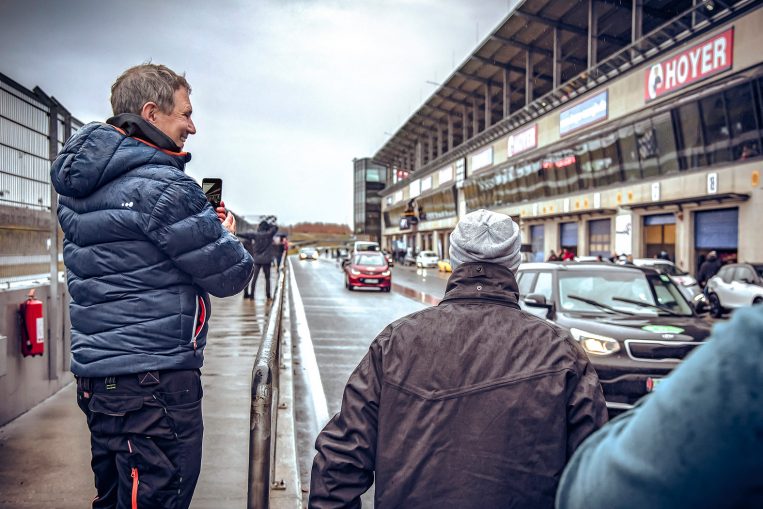
Thrilled with fourth place: Dr. Matthias Alt records the Ampera-e on his phone as it returns to the pit after 24 hours and 466 outstanding laps (or in other words, 1,071 kilometers).
Ranking
1. Tesla Roadster 2.5 495 laps
2. Hyundai Kona 486 laps
3. Renault ZOE 470 laps
4. Opel Ampera-e 466 laps
5. Hyundai Ioniq 453 laps
6. Renault ZOE 450 laps
7. Renault ZOE 447 laps
8. Twike III 443 laps
9. BWM i3s 439 laps
10. Tesla Model S S85 439 laps
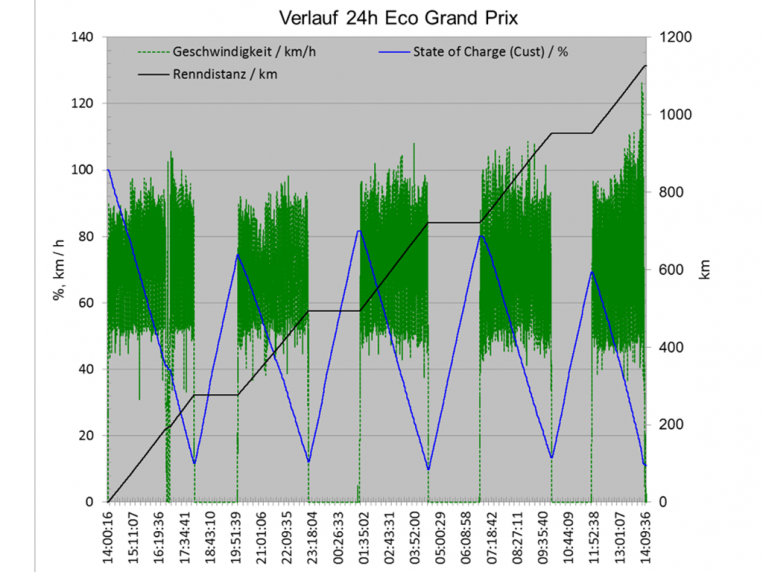
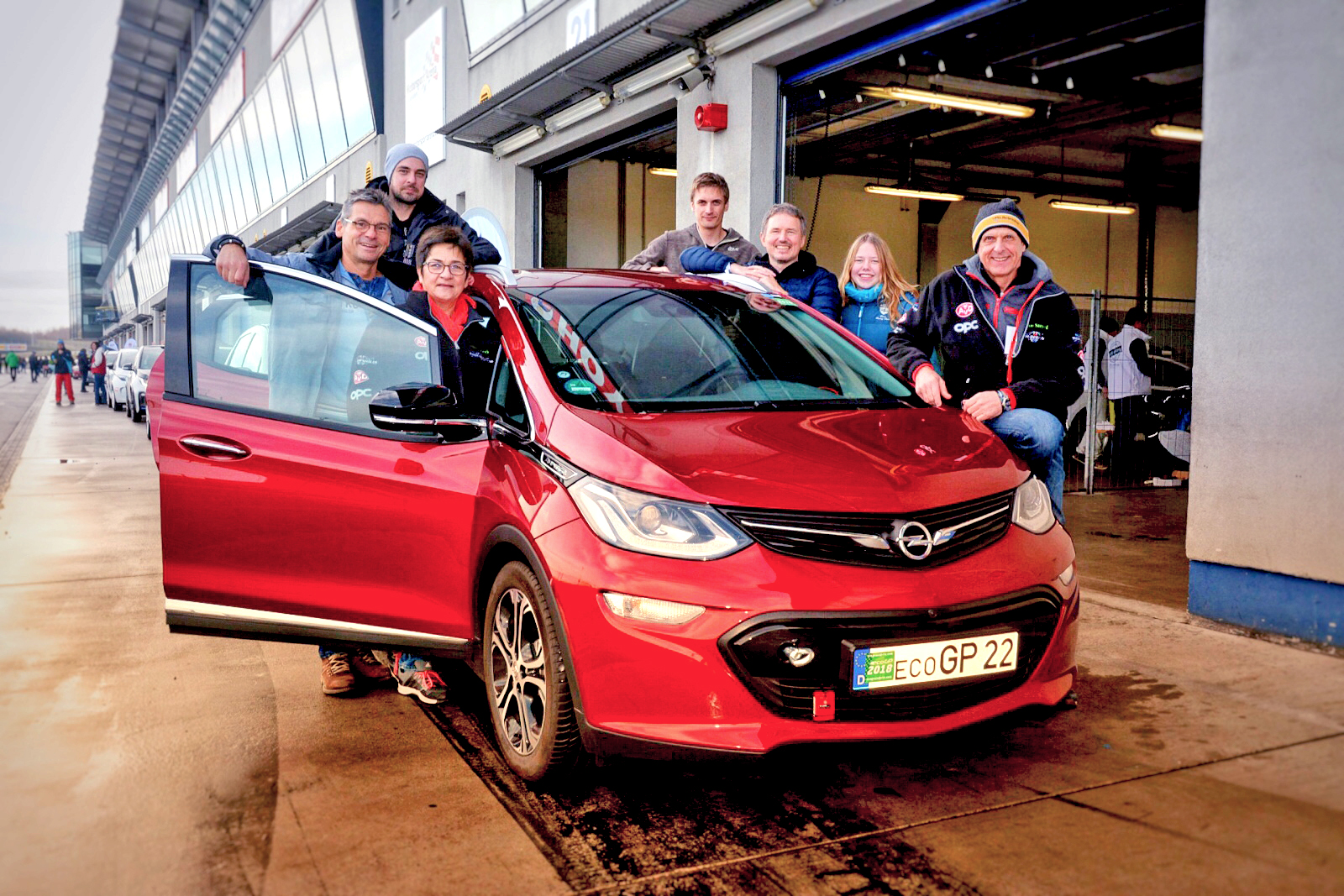
The team: Dr. Peter Ramminger, Robin Strycek, Maggy Strycek, Stefan Fiedler, Dr. Matthias Alt, Leonie Alt, and Volker Strycek (from left).
December 2018
